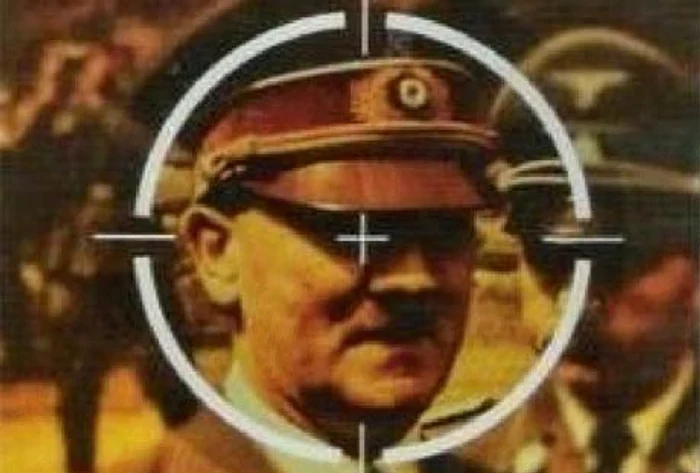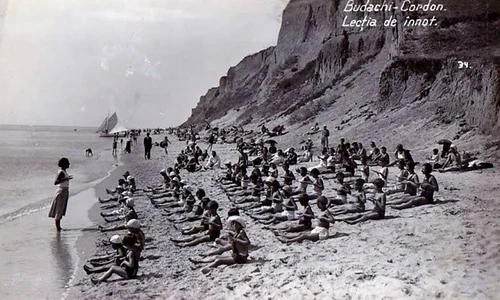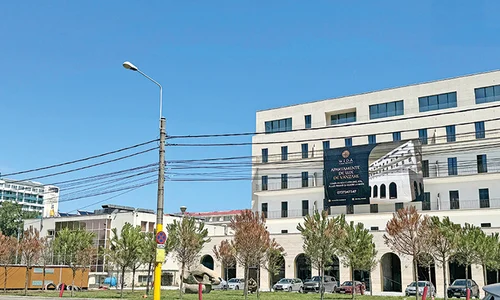
The German Resistance to Hitler: From Protests to Assassinations

Resisting Hitler was a very difficult task ever since the beginning of the Nazi regime in Germany, because the almost legal way in which he ascended to power. Therefore, it was impossible for the Germans to realise the moment when Hitler switched from legitimacy to illegitimacy. Yet, once the Second World War began, resisting the Nazi system became a very dramatic task. The Lutheran priest Dietrich Bonhoeffer explained the grave dilemma of the German people:“they could hope for their nation to be defeated, in order for the Christian civilisation to survive or they could wish for victory which would mean the destruction of our civilisation.”
Even though it was difficult to organise resistance in a police state such as Nazi Germany, the opposition was achieved by three methods:by open protest;by written word in speeches and leaflets aimed at influencing the public opinion;and covert, by exploiting the polycratic nature of the regime and by transforming the policies which had to be implemented. The third method implied the use of conspiratorial instruments such as assassinations and coup d’états. However, a very important observation is that the individuals who opposed the Nazi system were not considered patriots as in other European countries, but were regarded as traitors.
Open Protest
The Christian Churches organised the only common, open and large – scale protest against Hitler’s regime. The Fuhrer aimed at destroying their unity by supporting the advance of neo-pagan movements. He achieved that to some degree, since a number of pro-Nazis from inside the Lutheran Church broke away and created the Deutsche Christen(German Christians)group. After that, two thousand Lutheran priests defected and went on to create the Bekennende Kirche(Confessional Church).Among those priests was Martin Niemöller who was arrested in 1937 and sent to Sachsenhausen and Dachau concentration camps between 1948 and 1945.
The newly-created Church held its first synod in June 1934 in Barmen. Here, the pastors wrote six Articles of Faith and the fifth one aimed at transforming the relation between the State and the Church which had been distorted by the National – Socialist regime. Thus, “we reject the false doctrine through which the State, beyond its special mission, should become the only and totalitarian order of human life, therefore fulfilling the mission of the Church as well.”Moreover, the synod opposed the extension of the Aryan Clause to the Lutheran Church which forbade the Jews to take part in cultural activities.
The Twelfth Confessional Synod held in Breslau between 16 and 17 October 1943 openly repudiated the extermination policies carried out on the Eastern Front. “Concepts such as extermination, annihilation and life without value are unknown in the divine order. The annihilation of people, just because they are old or mentally ill or because they belong to another race, is an instrument which has not been given to the authorities … A person’s life belongs only to God. It is sacred to Him as is the life of the People of Israel.”
The Catholic Church lost its spiritual and political influence after the Concordat with the Holy See was concluded, because it meant the destruction of the Centre Catholic Party, Zentrum. Therefore, the Catholic Church protested against some aspects of the Nazi regime, yet, at the same, it requested submission to Hitlerism. However, against the official policy of the Church, some Catholics opposed the State more openly. Such is the example set by the bishop of Münster Graf Clemens August von Galen who was preaching against the euthanasia practices. Galen’s impact was so important that the minister of propaganda Goebbles decided to ask for the euthanasia program to be brought to an end.
Galen inspired a protest at the Munich University where the students created the Weiße Rose(White Rose)movement. The main activists were Hans and Sophie Scholl as well as Christopher Probst and their psychology and philosophy professor, Kurt Huber. After the bishop’s sermon, the Weiße Rosedistributed leaflets where they were condemning the regime and the failure of the German people to react against the atrocities perpetrated against the Russian and Jews on the EasternFront. However, the three students were arrested and executed by the Gestapo in 1943.
The Protest from the Inside of the Regime
Inside the regime, even in the circles closest to Hitler, there arose spontaneous oppositions to the Chancellor’s policies. The Chief of Staff, general Ludwig Beck, refused to organise the offensive against Czechoslovakia and wrote a memorandum for Hitler in which he expressed his fears towards the major risk of engaging Germany in a protracted war with the West.
There were people inside the Abwehr(Nazi Counter-Espionage Organization) and the Foreign Office who were opposing the system more or less visibly. They were, however, in a very difficult situation:had they chosen to give up their positions, it would have become virtually impossible for them to influence governmental policies. Yet, if they kept their jobs, they would have risked being easily influenced or even corrupted. Two Foreign Office ambassadors found themselves in this dilemma – Ulrich von Hassell, ambassador to Italy between 1932 and 1938 and Ernst von Weizsäcker– ambassador to Norway in 1933 and to Switzerland in 1937 after which he became Secretary of State in Joachim von Ribbentrop’s Foreign Office.
When the Nazi regime entered its radical phase in 1938, Hassell was retired from Rome and he decided to join the clandestine opposition against Hitler. He took part in the plot of July 20th, 1944 for which he received the death sentence. Initially, Hassell cooperated with Weizsäcker, in order to oppose the Führer, yet, at some point, the ex-ambassador to Rome felt that the State Secretary did not really desire Hitler’s ousting from power. Disappointed, Hassell wrote in his diary that “W. is favourable to the Nazis under his usual false mask.”
Conspiracies and assassinations
The chief of the Abwehr Wilhelm Canaris and his deputy Hans Oster tried to avoid the break out of the war and once it began, they did what they could to stop it. Therefore, in 1938 Canaris sent emissaries to the UK, in order to convince His Majesty’s Government of the reality of Hitler’s aggressive intentions. However, the British politicians were very cautious, since they were sceptic about the German emissaries’ trustworthiness. Because of this, Canaris’ plan of judging Hitler for endangering Germany’s security failed. Also, this abortive coup d’état did not benefit from the agreement between the British and the Nazis on Czechoslovakia’s fate at Munich.
The Allied decision of unconditional surrender of Nazi Germany at the Casablanca Conference in January 1943 rendered the efforts of the German opposition useless. Thus, the Resistance against Hitler understood that even if they managed to eliminate the Chancellor, the Allies would not accept them as part in post war negotiations. Yet, many of the generals closest to the Führer thought that the only option they had was Hitler’s assassination and therefore, two abortive assassination attempts were carried out in March and November 1943.
The plot of July 20th, 1944 was the most important attempt to kill Hitler. The Die Zeit issue of July 21st, 1989 informs that there were more than 200 important people of the Nazi regime involved in the plot. Among the conspirators were 19 generals, 26 colonels and lieutenant-colonels, 7 diplomats, 2 ambassadors, 1 minister, 3 state secretaries and the chief of police. The Operation Valkyrie(Walküre)was, in effect, a coup d’état which implied the assassination of Hitler and the liberation of the soldiers of the oath of allegiance to the Chancellor. This would have made it possible for the Resistance to rule the country and disarm the SS.
Surprisingly, Hitler survived the explosion of Claus von Stauffenberg’s bomb in the Wolf’s Lair (Wolfsschanze), the Führer’s HQ on the Eastern Front. The event did nothing but confirm his belief in the invincibility of his own power and person and this made him order the death of everybody involved. Officially, after the failure of the Operation Walküre, 5 746 individuals were assassinated.
The historian Richard J. Evans concluded that the assassination of these opponents of Hitler was, in fact, the history of the German resistance.
Bibliography
- Duroselle, Jean-Baptiste, History of International Relations 1919-1947, first volume, translation by Anca Airinei, Editura Ştiinţelor Sociale şi Politice, 2006
- Evans, Richard J, Rereading German History:From Unification to Reunification, Routledge, United Kingdom, 1997
- Kershaw, Ian, Hitler:1936 – 1945 Nemesis, Published by the Penguin Group, Penguin Books, England, 2001Simpson, William, Hitler and Germany, Cambridge University Press, Cambridge, United Kingdom 1991















